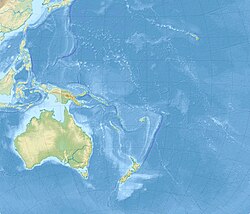| UNESCO World Heritage Site | |
|---|---|
 Fels Cave on Lelepa Island | |
| Location | Vanuatu |
| Criteria | Cultural: (iii)(v)(vi) |
| Reference | 1280 |
| Inscription | 2008 (32nd Session) |
| Area | 886.31 ha (2,190.1 acres) |
| Buffer zone | 1,275.42 ha (3,151.6 acres) |
| Coordinates | 17°37′41.05″S168°10′39.79″E / 17.6280694°S 168.1777194°E |
Roi Mata (or Roy Mata, Roymata) was a chiefly title in the central islands of Vanuatu. It was borne by a long dynasty of chiefs, from the 11th to the 17th century. [1]
Contents
Among the bearers of the Roi Mata title, the most famous is the last one, a man believed to have lived around year 1600. [2] That chief is often designated as "Roi Mata", with no formal distinction from its predecessors — a source of potential confusion. [3]
In 2008, three sites associated with Roi Mata, on the islands of Efate, Lelepa and Eretoka, were made UNESCO World Heritage Sites, including Roi Mata’s residence, the site of his death and Roi Mata’s mass burial site. [4] [5]




